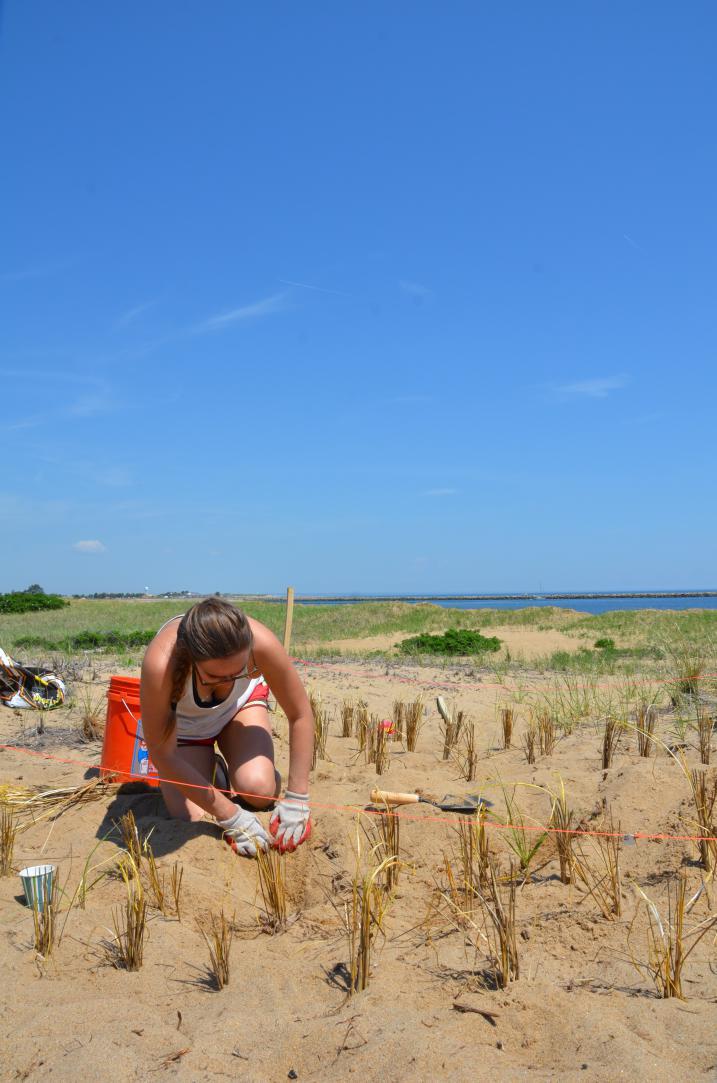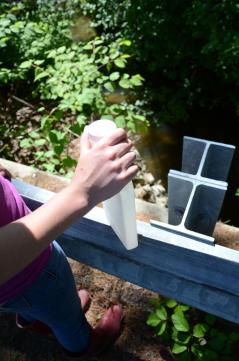The Best of Both Worlds

The first few weeks I spent here at the Stewardship Network: New England (now Nature Groupie) went by in the blink of an eye. Every day held a new adventure and I’ve loved every minute of it. My first week was a flurry of meeting new people, attending a volunteer conference, and participating in a citizen science event on with the NH Sea Grant and the Coastal Research Volunteers in Plum Island, MA. There’s nothing like dressing up for a conference one day and then getting covered in sand and peat moss planting dune grass on the next! The next week was the same story, I spent two days walking along rivers and through salt marshes testing water quality, another on a golf course doing water sampling, and then the a final day in the office. The week after that I was out at Hampton Beach counting beach grass and then spent the next few days sending emails. I’m beginning to understand the phrase “getting the best of both worlds.” I wanted to share with you all a few things I’ve learned. You may be able to tell my first few weeks were mostly about beach grass and water quality. Here’s a few interesting facts I’ve picked up along the way.
Beach Grass: (Not to be confused with Sea Grass!)
If you’ve been to the beach you’ve likely seen beach grass spread out in a dense carpet across the dunes. It needs very little to survive and can weather almost anything that the ocean, wind, and air could throw at it. When it is mature enough, it will send out “runners” via its roots that then sprout new grass nearby. This root system forms a type of lattice that holds the sand together, making it harder for wind or water to erode the dunes away. In many coastal communities where areas of beach grass have been damaged or killed due to human activity on the dunes erosion occurs at a faster rate. Because of this, communities and volunteers are planting new grass and minimizing the number of accessible paths through the dunes.
Water Quality
My project this summer with the Stewardship Network: New England (now called Nature Groupie) and the NH EPSCoR is focusing on measuring and monitoring water quality, so this has been a big topic for me this summer. Our team of UNH researchers and interns has been taking water samples and measurements for conductivity, dissolved oxygen, and temperature. By testing the conductivity of the water you can determine how much salt is in it. Dissolved oxygen tells us how much oxygen is available in the water for plants and animals. If a body of water has too much oxygen then it will release it back into the atmosphere. If it is too low, plants and animals in the water may die. These measurements can be taken using different types of equipment that is brought into the field. In addition to measurements, water samples are also taken at each site. Our samples will be filtered for bacteria and sediments. Because of this, you have to take great care to not touch the inside or lip of the bottle as not to contaminate it with your own bacteria. In addition, in shallow rivers it is important to not stir up the bottom of the riverbed as it may contribute to the bacteria levels or sediment levels in your sample, making them seem much higher than normal. Once the sample is taken it has to be refrigerated to ensure that the contents of the sample stays the same as when you took it.

Thank you for reading and taking interest in what I’ve been up to! If you’re interested to learn more about beach grass, or the ocean in general, check out the events calendar at Nature Groupie for more opportunities to work with the NH Sea Grant and the Coastal Research Volunteers. Here you’ll also find more opportunities to volunteer for nature through the many organizations that work with UNH to provide these fun and important events!